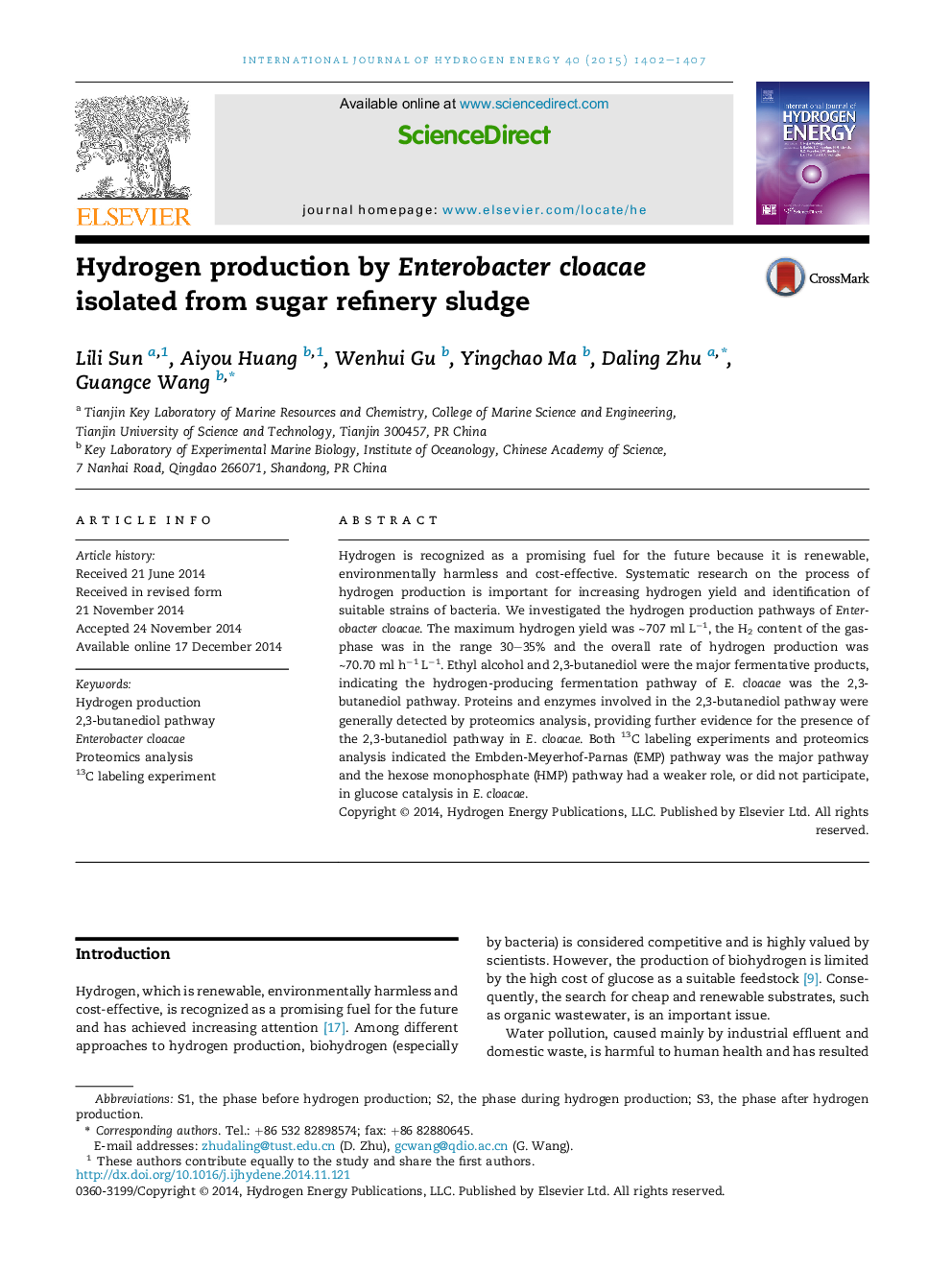| Article ID | Journal | Published Year | Pages | File Type |
|---|---|---|---|---|
| 1270127 | International Journal of Hydrogen Energy | 2015 | 6 Pages |
•We perform research on the hydrogen production pathways of Enterobacter cloacae.•The maximum hydrogen yield was ∼707 ml L−1.•The hydrogen-producing pathway of E. cloacae was the 2,3-butanediol pathway.•EMP is the major pathway and HMP has a weaker role in glucose catalysis.
Hydrogen is recognized as a promising fuel for the future because it is renewable, environmentally harmless and cost-effective. Systematic research on the process of hydrogen production is important for increasing hydrogen yield and identification of suitable strains of bacteria. We investigated the hydrogen production pathways of Enterobacter cloacae. The maximum hydrogen yield was ∼707 ml L−1, the H2 content of the gas-phase was in the range 30–35% and the overall rate of hydrogen production was ∼70.70 ml h−1 L−1. Ethyl alcohol and 2,3-butanediol were the major fermentative products, indicating the hydrogen-producing fermentation pathway of E. cloacae was the 2,3-butanediol pathway. Proteins and enzymes involved in the 2,3-butanediol pathway were generally detected by proteomics analysis, providing further evidence for the presence of the 2,3-butanediol pathway in E. cloacae. Both 13C labeling experiments and proteomics analysis indicated the Embden-Meyerhof-Parnas (EMP) pathway was the major pathway and the hexose monophosphate (HMP) pathway had a weaker role, or did not participate, in glucose catalysis in E. cloacae.
